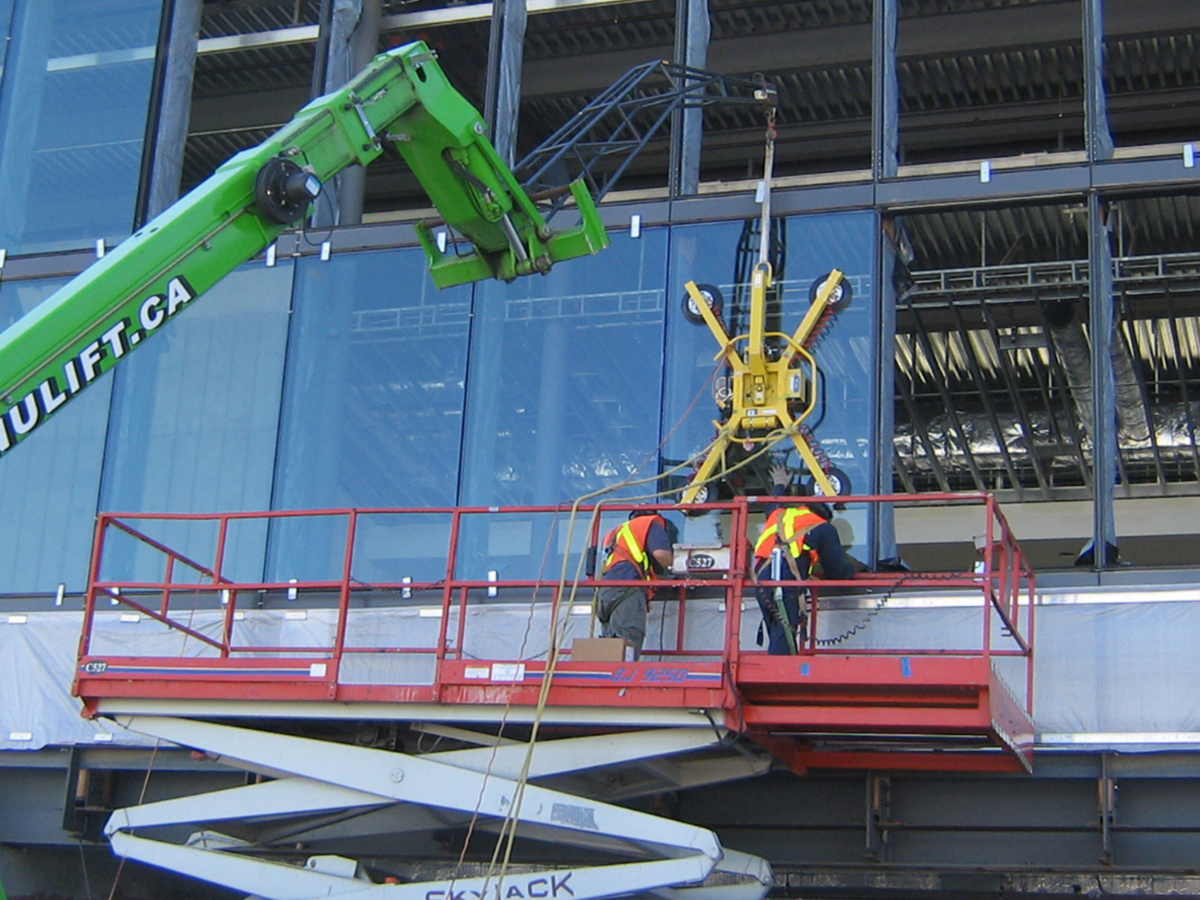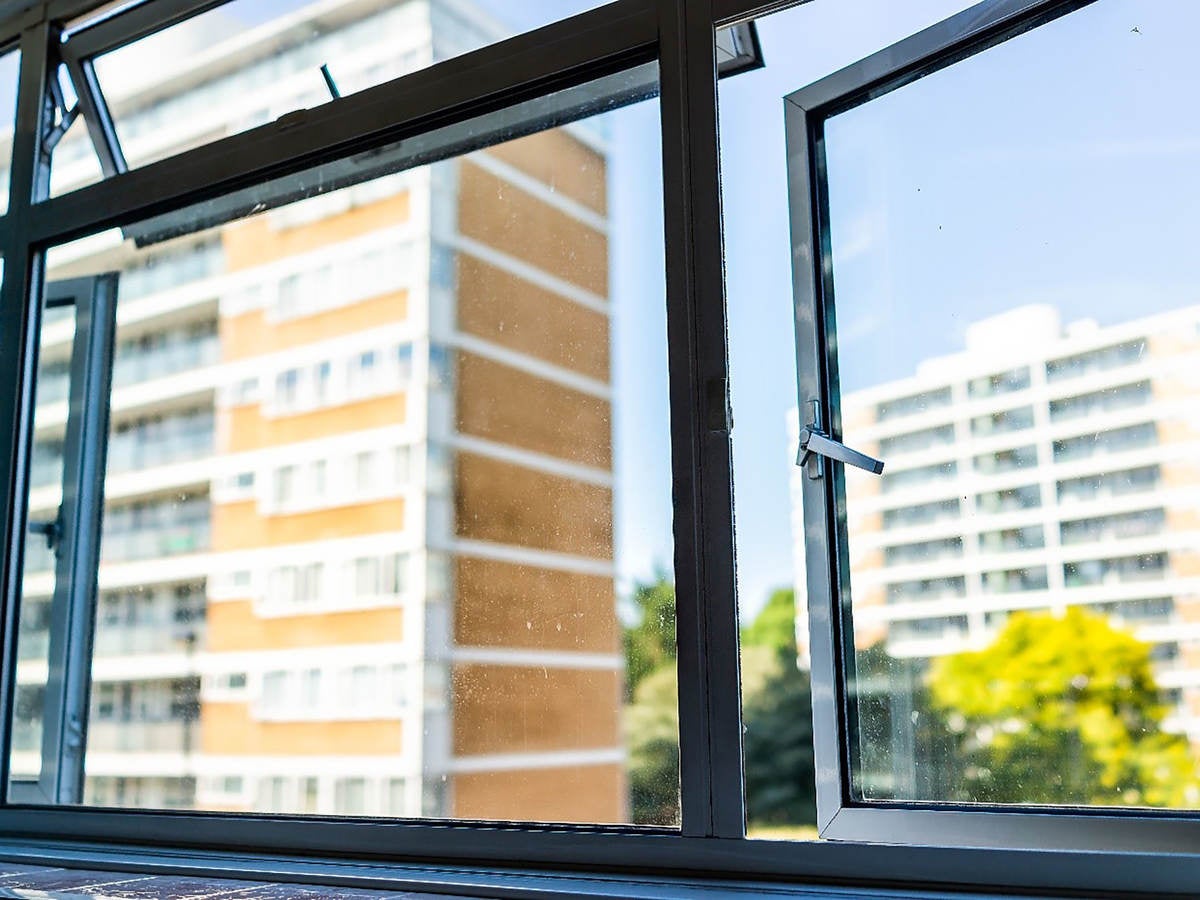September 11, 2020
Authored by: Dave Stammen, Principal Engineer – Building Envelope
Many factors should be considered when incorporating fenestration products such as windows, doors and skylights into a building envelope design. While aesthetics play an important role in the design for an architect or building owner, product and assembly testing in combination with proper installation are the critical factors to ensure adequate building performance. Improvements in model codes and product standards as well as a greater focus on design principles have significantly improved the performance of fenestration systems and their interaction within the building envelope. There are many aspects of fenestration performance to consider, such as resistance to water penetration, air leakage and wind load resistance. Additional considerations are performance against debris impacts, thermal issues, security, acoustics and more. Fortunately, there are ways to help achieve proper performance of these products throughout the building design and in-service life-cycle.
Fenestration products can be tested before being purchased and installed, during the installation phase and even in the field once a building has been occupied and is in use. When products are properly specified and considered, the three phases of testing, as shown in Figure 1, can deliver greater confidence in achieving long-term performance within the building envelope.
Within the United States and Canada, model code requirements reference industry product standards to establish performance requirements and test methods for fenestration products used within the building envelope. In the United States, the International Building Code (IBC) Chapter 17 and the International Residential Code (IRC) Chapter 6 require that window and door assemblies be tested and labeled as conforming to AAMA/WDMA/CSA 101/I.S.2/A440. There is one exception for doors to only be structurally tested, if applicable. For Canada, the National Building Code of Canada [NBC] parts 5 and 9 require that windows, doors and skylights be tested, not labeled, to the requirements in AAMA/WDMA/CSA101/1.S.2/A440 and CSA A440Sl (Canadian Supplement). These standards establish specifications for how products must perform and/or be rated. However, the test methods to evaluate laboratory, mock-up, and field performance of these fenestration products for both the United States and Canada are typically established by the American Society for Testing and Materials (ASTM) and the American Architectural Manufacturers Association (AAMA).


Laboratory Testing
With the greater focus on building performance attributes, building science laboratories are busier than ever with air cycling experiments, water exposure simulations and lumber impacts. These tests are essential in determining whether the fenestration products will perform once they are installed and exposed to outside conditions, such as wind, rain, heat, cold and wind-borne debris. Laboratory tests measure certain material properties, component and system durability and performance as well as methods of assembly and installation. These system tests are typically conducted on full-size prototypes, composed of the fenestration elements and surrounding portions of a representative exterior wall to determine the performance of the full assembly prior to construction and installation. For test results and product certifications to be accepted in the United States and Canada, testing must be conducted by an accredited laboratory to provide assurance that the test laboratory is independent, unbiased and it has the appropriate equipment and technical competency to conduct and manage the tests. Test reports contain the information necessary for code officials or other authorities to determine code compliance.
The following is a list of the primary industry specifications, with air, water and structural standards most commonly used to establish laboratory performance criteria for fenestration products within North America.
- AAMA/WDMA/CSA 101/I.S.2/A440: NAFS – North American Fenestration Standard/Specification for windows, doors, and skylights
- CSA A440S1: Canadian Supplement to AAMA/WDMA/CSA 101/I.S.2/A440, NAFS – North American Fenestration Standard/Specification for windows, doors and skylights
- It is important to note that these two standards do not apply to storefronts, window walls, curtain-walls and other glazed structures. Instead, the 2015 Canadian Building Code specifies the use of calculations detailed in CSA A440S1 to determine the minimum performance requirements for resistance to water penetration for these products.
- ASTM E283: Standard Test Method for Determining Rate of Air Leakage Through Exterior Windows, Curtain Walls, and Doors Under Specified Pressure Differences Across the
- Specimen – Test method and procedure for determining air leakage rates of fenestration assemblies and curtain walls using a pressure differential applied across the test specimen.
- ASTM E547: Standard Test Method for Water Penetration of Exterior Windows, Skylights, Doors, and Curtain Walls by Cyclic Static Air Pressure Difference – Test method for determining the resistance of fenestration assemblies and curtain walls to water penetration using a pressure differential applied across the test specimen.
- ASTM E330: Standard Test Method for Structural Performance of Exterior Windows, Doors, Skylights and Curtain Walls by Uniform Static Air Pressure Difference – Test method for determining the structural performance of fenestration assemblies and curtain walls using a pressure difference from a test chamber.


Pre-construction Mock-up Testing
Prior to installing the first window or door in a building, a pre-construction mock-up test is an excellent strategy to evaluate air resistance, water resistance, structural integrity and even thermal performance of fenestration and curtain walls. This approach can validate that the installation, design, workmanship and material selection of the complete building envelope system comply with model code requirements. This testing enables building owners, architects, consultants and manufacturers to represent the actual elements used in the final work as well as focus on specific areas such as the compatibility of fenestration systems to the wall interface. Mock-up testing also allows for installation contractors to become familiar with the actual products and methods of installation.
Prior to testing a mock-up, owners, building consultants and contractors must discuss design and installation details, as this information is crucial to defining the mock-up construction. This information will also be used to document any remedial changes to the design or installation during the testing phase and during actual construction.
Just as it is required for laboratory and field testing to be conducted by an accredited laboratory, it is also as important that mock-up testing be completed by an independent AAMA accredited testing agency. This ensures that the laboratory is experienced with the required tests and approved by the building owner.
AAMA 501: Methods of Test for Exterior Walls is the principle industry guide specification that is most commonly used to establish mock-up performance for wall systems, including fenestration assemblies within the United States and Canada.
Field Testing
Too often products and systems do well in laboratory or mockup testing, but still experience difficulties when installed or during their in-service life within the final building envelope. The most common problems are attributed to workmanship, methods of installation and use of appropriately tested products. This could lead to excessive air leakage as well as water intrusion, most often attributable to the interface with the adjacent wall construction and the envelope’s ability to perform as an integrated system. These interfaces are often the most critical elements of an individual product installation and may not have been fully validated by limited laboratory testing that did not include the interfaces.
Field testing of fenestration products and their interactions with the building envelope can demonstrate how a building is truly intended to function as an integrated system. When considering field testing, it is important to identify the areas that are most representative of the building design as well as include critical interface connections of fenestration products with the building envelope wall assembly. Field testing should also be considered at different stages of construction or even years after in-service use.
The following is a list of the industry specification and standards that are commonly used to establish field performance criteria for installed fenestration products and their interaction with the building envelope within North America.
- AAMA 501.1: Standard Test Method for Water Penetration of Windows, Curtain Walls and Doors Using Dynamic Pressure – Outlines the equipment, procedures and requirements for laboratory and field testing of exterior windows, curtain walls and doors for water penetration using dynamic pressure.
- AAMA 502: Voluntary Specification for Field Testing of Newly Installed Fenestration Products – Outlines field performance requirements regarding resistance to water penetration and air leakage for windows and glass doors for use in the United States.
- CAN/CSA-A440.4: Field Testing of Window and Door Installations – Outlines field performance requirements regarding resistance to water penetration and air leakage resistance for windows and doors for use in Canada.
- ASTM E783: Standard Test Method for Field Measurement of Air Leakage Through Installed Exterior Windows and Doors – Outlines the test method used in the field to measuring air leakage through installed exterior windows and doors. This test method is also used for measuring air leakage through curtain wall systems.
- ASTM E1105: Standard Test Method for Field Determination of Water Penetration of Installed Exterior Windows, Skylights, Doors and Curtain Walls by Uniform or Cyclic Static Air Pressure Difference – Outlines the test method used in the field to determine water penetration of installed exterior windows, curtain walls and doors.
Conclusion
Building performance is critical in today’s construction environment. By complying with model building code requirements and using the appropriate methods, building performance can be determined in multiple ways. There are three primary fenestration performance evaluation methods used today:
- Laboratory testing on representative samples of manufactured products,
- Full mock-up testing within a laboratory or in the field at a jobsite or
- Evaluating performance after being installed within the field.
Whatever methods are used, it is necessary to understand the full requirements of the codes, specifications and standardized testing methods. One recommendation is to engage experts who are familiar with these requirements and conduct these tests on a daily basis. Fenestration assessment and evaluation are key to the overall building performance, so it is important to remember the following:
- performance of window and wall systems that form part of the building envelope are to be evaluated by an accredited testing agency
- laboratory performance testing to standardized test methods is typically conducted on materials and fenestration assemblies only (not the interface with the wall system)
- mock-up evaluations can provide quality assurance and an opportunity to remediate design changes prior to full construction
- field testing on installed fenestration products within the building envelope can provide a more complete assessment of the overall built construction.
UL’s certified windstorm rated assemblies and products can be accessed using UL Product iQTM , then selecting Windstorm Rated Products. The windstorm certifications are located within the category Products for Use in Windstorm Rated Assemblies (ZHLL). The certification information for individual assemblies and products provides confirmation that the components within the assembly, especially hardware, is consistent with what was installed and tested as a system.
New White Paper: Fenestration Foundations for Building Envelope Performance
Fenestration product testing and certification can be a challenging hurdle to overcome, all before your windows, doors or skylights even have the chance to enter the market. If you don’t start out on the right path, the requirements, rules and regulations of the industry can make your journey more difficult. Fortunately, there are many ways to help ensure proper performance of these products throughout the design and in-service life cycle. Scientific testing is one of the most effective ways to verify and validate future performance and expedite time to market.
Subscribe to The Code Authority Newsletter
With the compliance landscape ever-changing, The Code Authority newsletter is your source for the latest news and trends in the compliance industry.
Get in touch
Have questions, need specifics? Let's get this conversation started.


